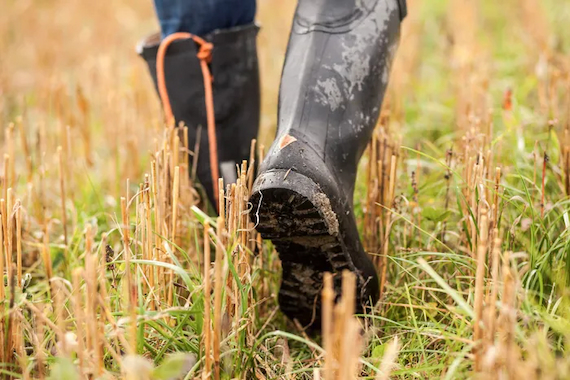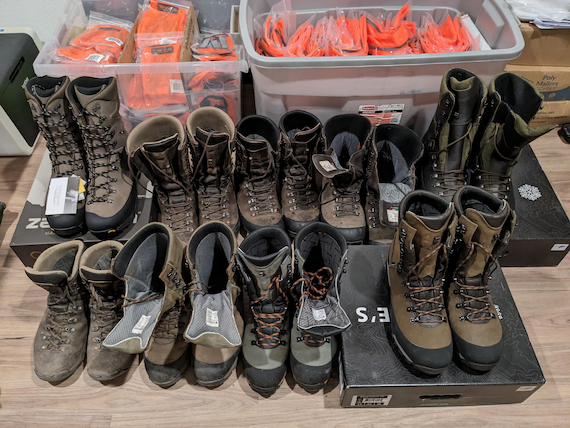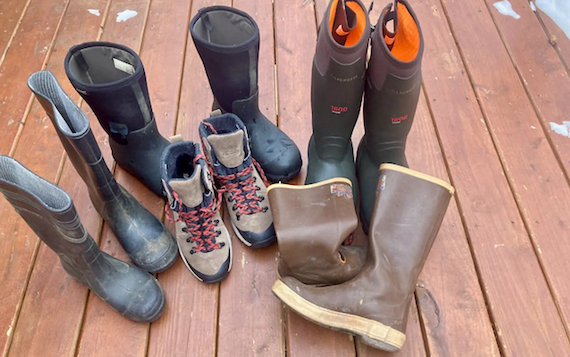While footwear is about fashion and style for most of us, in many occupational settings, it is a key element that keeps people safe and comfortable. For Australian workers operating in humid environments, whether it’s mining in the wet tropics, working in agriculture, construction, or manufacturing, having the proper work boots is of crucial importance. Waterproof safety boots are protective footwear that can prevent severe injuries, protect workers from moisture, and ensure workplace compliance. This guide will help you understand the numerous factors that influence comfort and safety.
What Are the Essential Features of Work Safety Boots?

When selecting safety boots, the most significant consideration is the protection of the toes. Steel-toe caps remain the best option, offering excellent protection against falling objects and compression forces of up to 200 joules. Composite toe caps are also gaining popularity due to their lighter weight and superior insulation properties, which make them ideal for workers operating at extremely cold or hot temperatures. Aluminium toe caps represent a compromise, offering good protection at a lighter weight than steel.
When it comes to dealing with moisture, pay close attention to waterproof technology. Choose durable boots for work with waterproof features. Breathable membranes like Gore-Tex or proprietary counterparts that don’t allow water ingress but allow vapour to escape prevent the build-up of condensation inside the boot during long hours of work. Sealed seam construction and waterproof zippers or gussets further extend the barricade against water penetration.
Sole construction has a major impact on safety and durability. Polyurethane soles with double density offer excellent shock absorption and chemical resistance, while rubber outsoles provide more traction on slippery grounds. The tread pattern should have deep lugs and channels that facilitate water dispersal and traction on slippery grounds. It is also advisable to choose boots with puncture-resistant midsoles, particularly required for construction or waste management personnel, where sharp materials are always a threat.
Comfort features should also not be overlooked, as uncomfortable boots can reduce productivity and create potential risks to safety. Waterproof safety boots should include moisture-wicking linings, proper arch support, and cushioned insoles. Some models include innovative technology like shock-absorbing heel strikes and ergonomic foot beds that are designed to reduce fatigue for extended wear periods.
The Critical Importance of Proper Selection

Selecting the correct waterproof work boots extends well beyond comfort issues—it directly relates to employee safety, productivity, and overall health and well-being. Poor footwear is responsible for countless work-related injuries, from puncture wounds and crushing trauma to slipping and falling incidents that can result in severe trauma or even fatalities.
Well-fitted waterproof safety shoes reduce the risk of contracting foot-related conditions like plantar fasciitis, bunions, and long-term back problems due to improper walking style and posture. Workers who work for eight hours or longer a day on their feet require boots that will provide proper support and cushioning to prevent fatigue and remain alert throughout their shift.
From an economic perspective, investing in good safety boots reduces long-term expenses that include injuries on the job, workers’ compensation claims, and reduced productivity. Good boots will typically outlast budget alternatives, provide more value over their lifespan, and maintain protective qualities during extended use.
The psychological impact of comfortable, reliable safety footwear cannot be overstated. Workers who trust their protective footwear tend to exhibit enhanced confidence and focus in their job, leading to improved productivity and reduced accidents. Poor or uncomfortable footwear, however, can lead to distractions that snowball into accidents and injuries.
Australian Industry Standards and Compliance

Safety boots for the workplace in Australia need to comply with AS/NZS 2210 standards, which stipulate requirements for protection levels and testing procedures. The standard encompasses impact protection, compression resistance, puncture protection, and slip protection, ensuring that boots meet minimum safety standards for various industrial applications.
The norm separates safety footwear into different groups based on levels of protection. Class I comprises basic safety features like protection of the toes and puncture resistance of the sole. Class II adds protection of the metatarsals, while specialised types address specific risks like electrical insulation, chemical resistance, and chainsaw protection. Understanding these classifications will help you pick boots appropriate for your specific work situation and regulatory requirements.
Australian occupational health and safety legislation requires employers to provide the appropriate personal protective equipment, including safety boots, where workplace hazards cannot be otherwise eliminated. This legislated component exists to reinforce the process of selecting boots that not only meet industry standards but also effectively address threats within your workplace environment. Check for boots that clearly show certification marks and records of compliance with applicable AS/NZS specifications.
Takeaway
Selecting boots for work with waterproof features requires balancing a number of factors like specific workplace hazards, comfort requirements, durability needs, and expense. Consider the environment where you will be wearing them, temperature conditions, chemical exposure, and terrain.
Professional fitting by trained retailers ensures the correct size and can identify specific foot characteristics that will require special features or adaptation. Remember that safety footwear is an investment in your own safety and future health, and therefore, quality and proper choice are far more important than initial cost considerations.


